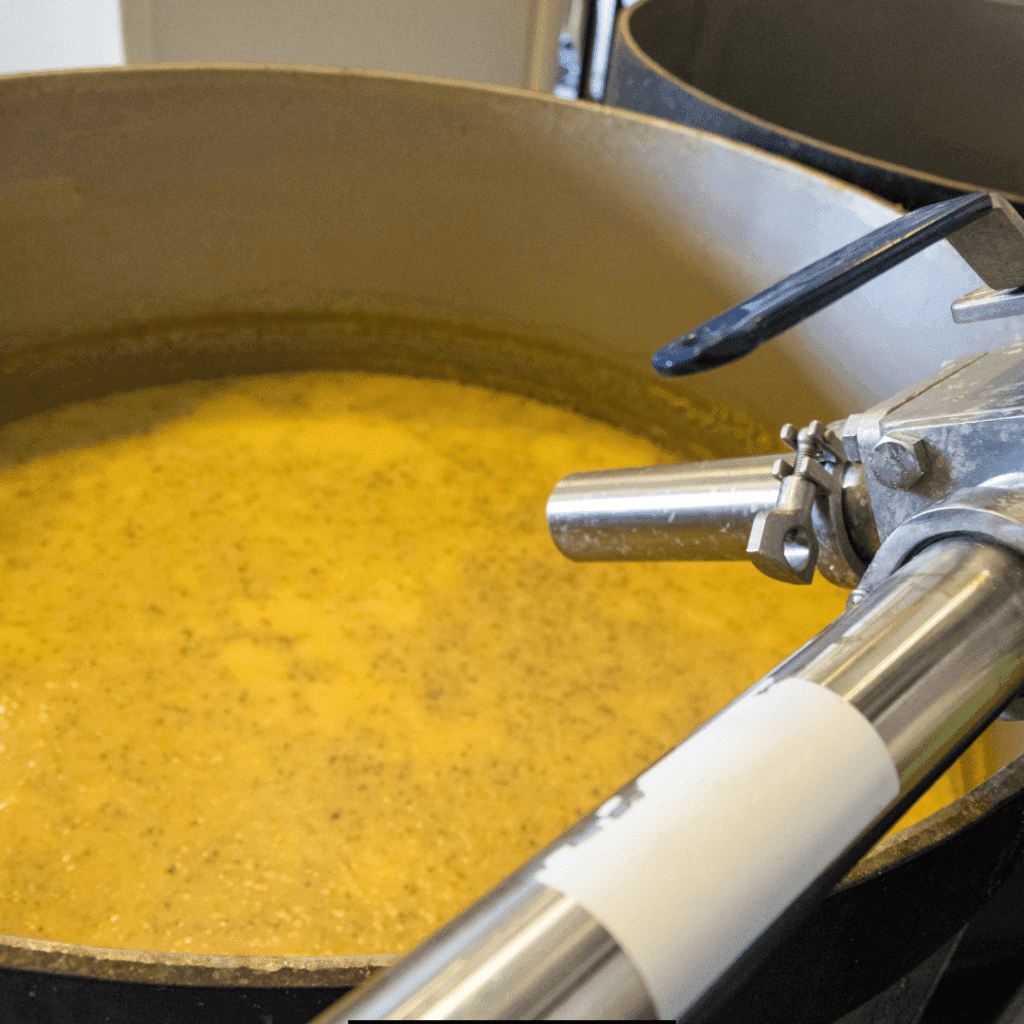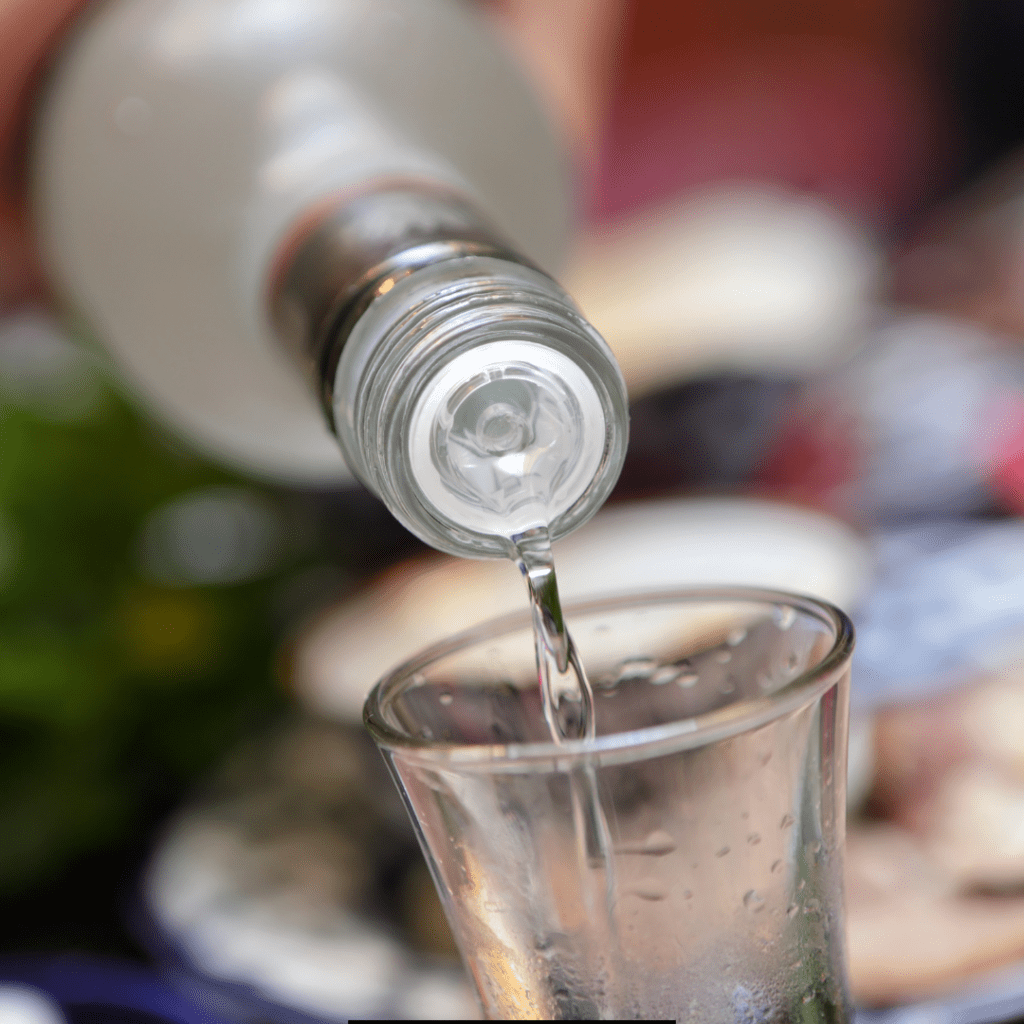Now, you may be thinking, “Isn’t vodka made from potatoes?” Sure, that’s one way to conjure up this clear liquid delight, but did you know vodka can be brewed from a bounty of ingredients, including grains, fruits, and even sugar? Oh yes, the world of vodka mash is your oyster, and we’re about to shuck it wide open!
How to make Vodka Mash
Vodka mash, also known as vodka base or vodka distillate, is the raw material used in the production of vodka. It’s typically made from grains like wheat, rye, barley, or corn, though it can also be made from potatoes or other starchy materials.
Ingredients
- Water: The unsung hero. Make sure it’s filtered; we’re crafting high-quality hooch here.
- Sugar: The fuel for fermentation. Plain old sugar will do, but don’t shy away from experimenting with different types, like beet or cane sugar, for unique flavors.
- Yeast: The magic dust. Yeast is what turns your sugary water into alcohol. Go for a high-quality distiller’s yeast for the best results.
- The Base: Here’s where you can get creative. Traditionalists might go for potatoes, but grains like barley, wheat, or even ripe fruits can add a unique twist. Choose your adventure!
Brewing Instructions
- The Mix: Kick things off by heating your water (not too hot, though, you don’t want to anger the yeast gods) and dissolve the sugar until it’s totally blended. This is the sweet beginning every mash dreams of.
- Choosing Your Base: For grain or potato-based mashes, you’ll need to cook your base to release those essential sugars. Think of it as coaxing the flavors out to play. For fruits, a good mash (the squishy kind) will do the trick.
- Cool Down: Let your concoction cool to yeast-friendly temperatures. Too hot and you’ll send your yeast to an early grave, too cold and they’ll go on strike.
- Yeast Party: Introduce your yeast to the mix. This is where the magic starts. A good stir to make sure they’re well acquainted, then cover your bucket or fermenter to give them some privacy.
- Waiting Game: Fermentation time. This could take anywhere from a week to ten days. Look for the tell-tale signs of fermentation like bubbling, fizzing, and the unmistakable smell of alcohol.
- Strain it Out: Once the party’s over, it’s time to separate the liquid gold from the solids. Strain with care.
Tips and Tricks:
- Temperature Matters: Keep a close eye on your mash’s environment. Too cold, and your yeast will nap; too warm, and it might die. Somewhere between cozy room temperature and a mild summer day is your sweet spot.
- Patience, Young Grasshopper: Rushing fermentation only leads to heartbreak—and bad vodka. Give it time, and you’ll be rewarded.
- Cleanliness is Next to Godliness: This isn’t just about your hands. Make sure everything that comes in contact with your mash is sanitized. We’re brewing vodka, not science experiments gone wrong.
- Experiment: Once you’ve got the basics down, play around! Try different bases or a mix of them, tweak your sugar levels, maybe whisper sweet nothings to your yeast. Make this recipe your own.
What to serve with Vodka Mash
Let’s take a flavor-packed stroll through some scrumptious pairings that will complement your vodka, ensuring every sip is as memorable as the last.
Snacks on Deck!
1. Cheese!
Nothing says party like a good cheese platter. Opt for mild cheeses like mozzarella or creamy goat cheese. These won’t overpower your vodka’s delicate flavor nuances. A sharp cheddar might just steal the spotlight, so keep it light and creamy.
2. Crackers and Bread
Sometimes, keeping it simple is the way to go. Lay out some lightly salted crackers or slices of fresh baguette. These are perfect for a bit of crunch and will help balance the alcohol’s sharpness, giving your palate a neutral base.
3. Pickles and Olives
Want to kick things up a notch? Bring in some tang. Pickles, olives, and even a dash of sauerkraut offer a delightful tartness that can cleanse the palate and enhance the smooth, clean notes of your vodka.
The Main Course
1. Seafood Delights
If you’re in the mood to impress, why not go all out with some seafood delights? Smoked salmon, shrimp cocktail, or even simple grilled fish can work wonders. These dishes are traditionally served with vodka in many cultures and complement the alcohol’s crispness beautifully.
2. Light Pasta Dishes
Avoid heavy, creamy sauces—think buttery or herbed. A light spaghetti aglio e olio or a zesty lemon and pepper tagliatelle can be a delightful companion to your spirit without veering into food coma territory.
Sweet Endings
1. Fruit-Based Desserts
Keep it fresh and light in the dessert department. Think fruit tarts or lemon sorbets. Their natural acidity and sweetness can create a playful contrast with your vodka, wrapping up your meal on a high note.
2. Chocolate
Yes, chocolate! But keep it dark. A piece of high-quality dark chocolate can highlight the deeper, hidden notes in vodka, turning each sip into a discovery.
Final Thoughts
There you have it—your blueprint for creating a vodka mash that could just be the talk of the town. Remember, half the fun is in the journey (even when that journey involves a bit of trial and error). So, don your brewer’s hat, channel your inner alchemist, and let’s make some spirits soar!
Vodka Mash Recipe

Now, you may be thinking, “Isn’t vodka made from potatoes?” Sure, that’s one way to conjure up this clear liquid delight, but did you know vodka can be brewed from a bounty of ingredients, including grains, fruits, and even sugar? Oh yes, the world of vodka mash is your oyster, and we’re about to shuck it wide open!
Ingredients
- Water: The unsung hero. Make sure it’s filtered; we’re crafting high-quality hooch here.
- Sugar: The fuel for fermentation. Plain old sugar will do, but don’t shy away from experimenting with different types, like beet or cane sugar, for unique flavors.
- Yeast: The magic dust. Yeast is what turns your sugary water into alcohol. Go for a high-quality distiller’s yeast for the best results.
- The Base: Here’s where you can get creative. Traditionalists might go for potatoes, but grains like barley, wheat, or even ripe fruits can add a unique twist. Choose your adventure!
Instructions
- The Mix: Kick things off by heating your water (not too hot, though, you don’t want to anger the yeast gods) and dissolve the sugar until it’s totally blended. This is the sweet beginning every mash dreams of.
- Choosing Your Base: For grain or potato-based mashes, you’ll need to cook your base to release those essential sugars. Think of it as coaxing the flavors out to play. For fruits, a good mash (the squishy kind) will do the trick.
- Cool Down: Let your concoction cool to yeast-friendly temperatures. Too hot and you’ll send your yeast to an early grave, too cold and they’ll go on strike.
- Yeast Party: Introduce your yeast to the mix. This is where the magic starts. A good stir to make sure they’re well acquainted, then cover your bucket or fermenter to give them some privacy.
- Waiting Game: Fermentation time. This could take anywhere from a week to ten days. Look for the tell-tale signs of fermentation like bubbling, fizzing, and the unmistakable smell of alcohol.
- Strain it Out: Once the party’s over, it’s time to separate the liquid gold from the solids. Strain with care.
Notes
- Temperature Matters: Keep a close eye on your mash’s environment. Too cold, and your yeast will nap; too warm, and it might die. Somewhere between cozy room temperature and a mild summer day is your sweet spot.
- Patience, Young Grasshopper: Rushing fermentation only leads to heartbreak—and bad vodka. Give it time, and you’ll be rewarded.
- Cleanliness is Next to Godliness: This isn’t just about your hands. Make sure everything that comes in contact with your mash is sanitized. We’re brewing vodka, not science experiments gone wrong.
- Experiment: Once you’ve got the basics down, play around! Try different bases or a mix of them, tweak your sugar levels, maybe whisper sweet nothings to your yeast. Make this recipe your own.
[penci_recipe]
Discover more from Better Sweet Drinks
Subscribe to get the latest posts sent to your email.

